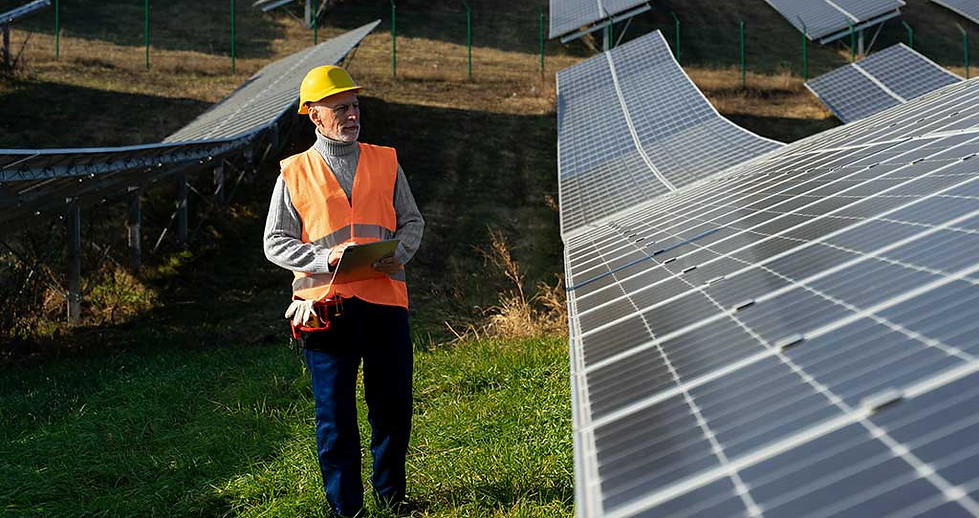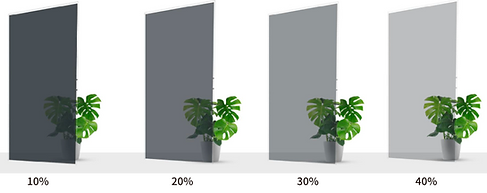
to the future
Welcome
The nation that will lead the way in renewable energy
It will be the nation that will lead the world in ten or twenty years.
(James Cameron)

ENERGY
SOLAR
Solar energy refers to the energy released by the sun and transmitted to Earth in the form of electromagnetic radiation (light and heat). By directly harnessing this energy, using appropriate technologies, it is possible to generate electricity and heat.
Solar energy refers to the energy released by the sun and transmitted to Earth in the form of electromagnetic radiation (light and heat). By directly harnessing this energy, using appropriate technologies, it is possible to generate electricity and heat.
From this energy, all other energy sources available to man derive more or less directly, such as fossil fuels, hydroelectric energy, wind energy, biomass energy, with the sole exceptions of nuclear energy, geothermal energy and tidal energy.
It can be used directly for energy purposes to produce heat or electricity with various types of systems.
On Earth, the value of this energy (locally or globally, daily, monthly, or annually) can be calculated as the product of the average insolation, the heliophany (a meteorological quantity that measures the duration of sunshine in a specific location or area) in the time interval considered, and the incident surface considered.
From this energy, all other energy sources available to man derive more or less directly, such as fossil fuels, hydroelectric energy, wind energy, biomass energy, with the sole exceptions of nuclear energy, geothermal energy and tidal energy.
It can be used directly for energy purposes to produce heat or electricity with various types of systems.
On Earth, the value of this energy (locally or globally, daily, monthly, or annually) can be calculated as the product of the average insolation, the heliophany (a meteorological quantity that measures the duration of sunshine in a specific location or area) in the time interval considered, and the incident surface considered.
From this energy, all other energy sources available to man derive more or less directly, such as fossil fuels, hydroelectric energy, wind energy, biomass energy, with the sole exceptions of nuclear energy, geothermal energy and tidal energy.
It can be used directly for energy purposes to produce heat or electricity with various types of systems.
On Earth, the value of this energy (locally or globally, daily, monthly, or annually) can be calculated as the product of the average insolation, the heliophany (a meteorological quantity that measures the duration of sunshine in a specific location or area) in the time interval considered, and the incident surface considered.

Plants
A photovoltaic system offers many advantages: it brings energy into your home, saves you on bills, and helps protect the environment.
A photovoltaic system is an electrical system essentially consisting of the assembly of multiple photovoltaic modules that exploit solar energy to produce electrical energy through the photovoltaic effect, the necessary electrical (cables) and electronic (inverter) components and, where appropriate, mechanical-automatic solar tracking systems.




Photovoltaic systems can be designed and installed in three different ways:
Grid connected: the technology in question is connected to the national electricity grid;
Stand alone (also called island): the photovoltaic system is not connected to the national electricity grid and the energy produced by the solar modules is stored in batteries
Storage: This is a "hybrid" system that combines the other two installation types mentioned above in a single system. A so-called storage system is an innovative system in which the energy produced is initially stored in storage systems and, once capacity is reached, the residual energy is fed into the national electricity grid;
Plug & Play: micro solar energy production systems with power less than 350 W. Not to be confused with mini photovoltaics, i.e., a solar system whose power is greater than 350 W but less than or equal to 800 W.
Photovoltaic systems can be designed and installed in three different ways:
Grid connected: the technology in question is connected to the national electricity grid;
Stand alone (also called island): the photovoltaic system is not connected to the national electricity grid and the energy produced by the solar modules is stored in batteries
Storage: This is a "hybrid" system that combines the other two installation types mentioned above in a single system. A so-called storage system is an innovative system in which the energy produced is initially stored in storage systems and, once capacity is reached, the residual energy is fed into the national electricity grid;
Plug & Play: micro solar energy production systems with power less than 350 W. Not to be confused with mini photovoltaics, i.e., a solar system whose power is greater than 350 W but less than or equal to 800 W.
Photovoltaic systems can be designed and installed in three different ways:
Grid connected: the technology in question is connected to the national electricity grid;
Stand alone (also called island): the photovoltaic system is not connected to the national electricity grid and the energy produced by the solar modules is stored in batteries
Storage: This is a "hybrid" system that combines the other two installation types mentioned above in a single system. A so-called storage system is an innovative system in which the energy produced is initially stored in storage systems and, once capacity is reached, the residual energy is fed into the national electricity grid;
Plug & Play: micro solar energy production systems with power less than 350 W. Not to be confused with mini photovoltaics, i.e., a solar system whose power is greater than 350 W but less than or equal to 800 W.
Photovoltaic systems can be designed and installed in three different ways:
Grid connected: the technology in question is connected to the national electricity grid;
Stand alone (also called island): the photovoltaic system is not connected to the national electricity grid and the energy produced by the solar modules is stored in batteries
Storage: This is a "hybrid" system that combines the other two installation types mentioned above in a single system. A so-called storage system is an innovative system in which the energy produced is initially stored in storage systems and, once capacity is reached, the residual energy is fed into the national electricity grid;
Plug & Play: micro solar energy production systems with power less than 350 W. Not to be confused with mini photovoltaics, i.e., a solar system whose power is greater than 350 W but less than or equal to 800 W.
Photovoltaic systems can be designed and installed in three different ways:
Grid connected: the technology in question is connected to the national electricity grid;
Stand alone (also called island): the photovoltaic system is not connected to the national electricity grid and the energy produced by the solar modules is stored in batteries
Storage: This is a "hybrid" system that combines the other two installation types mentioned above in a single system. A so-called storage system is an innovative system in which the energy produced is initially stored in storage systems and, once capacity is reached, the residual energy is fed into the national electricity grid;
Plug & Play: micro solar energy production systems with power less than 350 W. Not to be confused with mini photovoltaics, i.e., a solar system whose power is greater than 350 W but less than or equal to 800 W.
Photovoltaic systems can be designed and installed in three different ways:
Grid connected: the technology in question is connected to the national electricity grid;
Stand alone (also called island): the photovoltaic system is not connected to the national electricity grid and the energy produced by the solar modules is stored in batteries
Storage: This is a "hybrid" system that combines the other two installation types mentioned above in a single system. A so-called storage system is an innovative system in which the energy produced is initially stored in storage systems and, once capacity is reached, the residual energy is fed into the national electricity grid;
Plug & Play: micro solar energy production systems with power less than 350 W. Not to be confused with mini photovoltaics, i.e., a solar system whose power is greater than 350 W but less than or equal to 800 W.


SERVICE
MAINTENANCE
PLANTS
Proper maintenance is the foundation for a perfectly functioning photovoltaic system, ensuring continuous production, ensuring consistent energy efficiency, and ensuring a return on investment.
Ordinary Maintenance
To ensure the perfect functioning and optimisation of photovoltaic systems' production throughout their lifespan, it is essential to schedule periodic checks and routine maintenance operations to ensure the perfect functioning of all system components.
Extraordinary Maintenance
When unexpected events occur that cause system malfunctions and consequently production losses, extraordinary maintenance operations are required to immediately restore the system's full functionality.

REVAMPING
Although long-lasting and with an estimated useful life of around 30 years, the Italian photovoltaic systems created with the Conto Energia are beginning to show signs of age and to experience drops in production.
To allow their owners to restore their original power, or even improve them, a type of intervention has been planned, "photovoltaic revamping", which allows systems to be strengthened, recovering losses and increasing profits in view of the end of the energy bill.
The purpose of revamping is to make systems more efficient and functional, renovate them, and adapt them to new technologies and needs, thus increasing production.
Revamping allows you to restore obsolete components and equipment, replacing them with modern technologies that allow the system to begin a new productive life, bringing increased productivity and energy savings.
Specifically, it refers to a series of restructuring interventions, which aim to make vehicles and people safe:
Replacing obsolete technological processes with modern processes
Replacement, installation, relocation of electrical equipment and systems
Use of new technologies
Improved environmental conditions, production flexibility, quality parameters, efficiency index.
Photovoltaic systems can be designed and installed in three different ways:
Grid connected: the technology in question is connected to the national electricity grid;
Stand alone (also called island): the photovoltaic system is not connected to the national electricity grid and the energy produced by the solar modules is stored in batteries
Storage: This is a "hybrid" system that combines the other two installation types mentioned above in a single system. A so-called storage system is an innovative system in which the energy produced is initially stored in storage systems and, once capacity is reached, the residual energy is fed into the national electricity grid;
Plug & Play: micro solar energy production systems with power less than 350 W. Not to be confused with mini photovoltaics, i.e., a solar system whose power is greater than 350 W but less than or equal to 800 W.
Photovoltaic systems can be designed and installed in three different ways:
Grid connected: the technology in question is connected to the national electricity grid;
Stand alone (also called island): the photovoltaic system is not connected to the national electricity grid and the energy produced by the solar modules is stored in batteries
Storage: This is a "hybrid" system that combines the other two installation types mentioned above in a single system. A so-called storage system is an innovative system in which the energy produced is initially stored in storage systems and, once capacity is reached, the residual energy is fed into the national electricity grid;
Plug & Play: micro solar energy production systems with power less than 350 W. Not to be confused with mini photovoltaics, i.e., a solar system whose power is greater than 350 W but less than or equal to 800 W.
